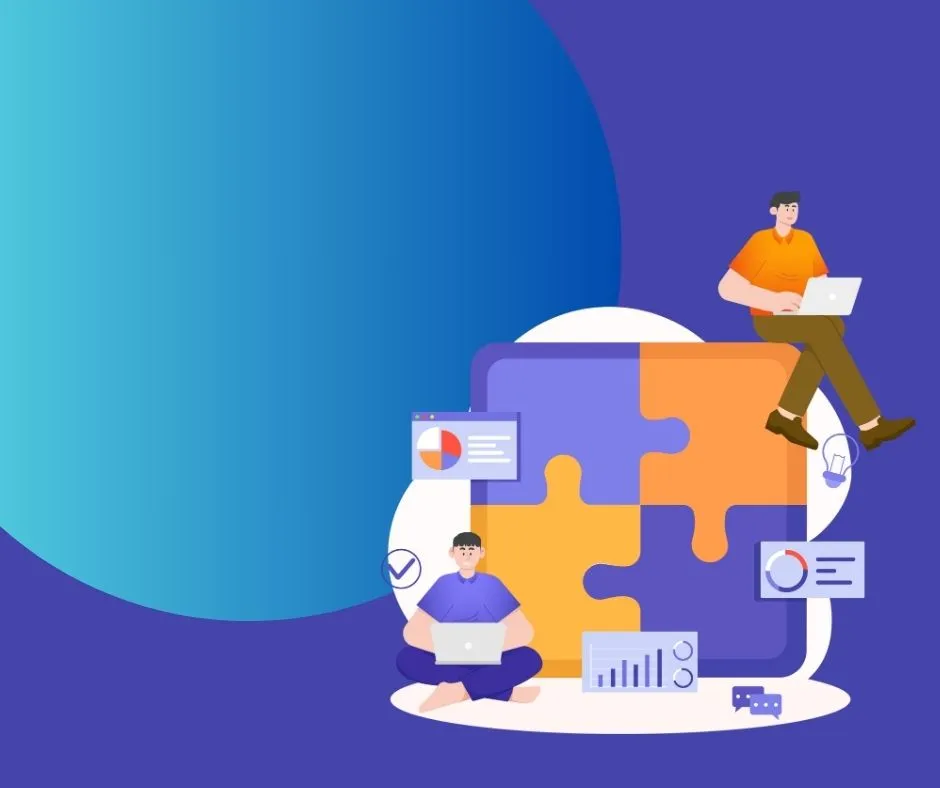How to Get High-Quality Backlinks to Rank a Website? All types of Backlinks Facebook Twitter Instagram Blogger Pinterest Medium Linkedin Backlinks are …
In 2023, Google made big changes in its algorithm that might affect many websites. Google updated the main part, which shows up in search results. It’s important to understand them so that your website can be seen in search engine results.
In this context, we will explore how Google Algorithm Updates affect SEO optimization of webpages and websites. In this blog, we are going to talk about how to make a website SEO-optimized, user-friendly, and speed according to Google Algorithms and changing updates. This content will prove like a guide to help your website rank in search engines.
Let’s take a closer look at the recent updates in the algorithms that could make a big difference for online content.
Table of Contents
Google Algorithm Updates, 2023
Google, in 21 February 2023 update, emphasizes setting up a detailed review system through which people could find helpful reviews, not just summaries of stuff. Google is always working to make its review system better. This system looks at articles, blog posts, and other content made by the same people who run the website. It checks if they’re giving recommendations, opinions, or analyses. But it doesn’t look at reviews from users on a product or service page. This update applies to these global languages: English, Spanish, German, French, Italian, Vietnamese, Indonesian, Russian, Dutch, Portuguese, and Polish.
In 15 March 2023, Google made a big update to how it decides which websites show up in searches. This update affects all kinds of content, for all languages and regions. Google says they made these changes to understand and rank content better. If you have a website, it is important to focus on good-quality content and high-quality web pages. Websites should have helpful information, a focus on user experience, and strong E-A-T (experience, expertise, authority, and trustworthiness).
In 12 April 2023, Google made a big update about reviews. This affects reviews for things like products, services, games, and movies. It’s not only important for people who work with SEO but also for businesses that depend on customer reviews. When they rolled out this update, things were a bit shaky on April 20th, 23rd, and 25th.
To do well in this new system, Google suggests making good reviews. Your reviews should show that you know a lot about the topic, give proof, and talk about both the good and bad sides.

In 22 August 2023, Google made big changes to how Google understands and ranks website content better. Now, some pages might rank higher while others could not.
This update ended on September 7, 2023. If your website was affected, Google will give you some advice to do SEO. If you want more help with keeping your website successful in online searches, the SEO experts at ROI Revolution can assist.
In 14 September 2023, Google did something called the September Helpful Content Update. This update, which finished on September 28. This update is to produce helpful content that might rank higher in search results. They did a similar update in December 2022.
In October 2023, Google made two important updates. First, on October 5, they released the October 2023 Core Update, and it finished on October 19. This update is like a tune-up to make Google better at understanding and ranking content. Then, on October 4, they also did a spam update to detect and deal with spam. This spam update will take about 2-3 weeks to finish, and it aims to be better in many languages, like Turkish, Vietnamese, Indonesian, Hindi, Chinese, and more.
In November 2023, Google made two important updates. First, the November 2023 Review Update started on November 8 and will finish in about two weeks. This update focuses on giving importance to really good reviews. If you want your reviews to be noted, make sure they’re well-researched, written by experts, and explore both sides of the topic (pros and cones).
The second update, the November 2023 Broad Core Update, came out on November 2. Google always provides helpful and trustworthy search results. It might impact site visitors. These kinds of updates usually take about two weeks to finish. If you’re curious about how it might affect your content, Google has some extra tips that might help.
Summary of Google Algorithm Updates 2023
In summary Google focuses on:
February 2023 Algorithm Update
- High-quality reviews
- In-depth research
- Fresh content
- Expertise
March 2023 Algorithm Update
- Spam protected content
- High-quality, useful, fresh content
- Researched content
- Not AI-generated
- Trustworthiness
- Niche Expertise
- Helpful user experience
- Website security
- Structured data
- Use of keywords in the meta title and description
- Aspects of experience, expertise, authoritativeness, and trustworthiness, or what we call E-E-A-T
April 2023 Review Update
- High-quality reviews
- In-depth research
- Fresh content
- Reviews and content must be based on expertise
August 2023 Core Update
- Spam-protected, quality content
- Fresh, researched content
- Expertise
- Not AI-generated
- Trustworthiness
September 2023 Algorithm Update
- Good user experience
- Mobile-friendly interphase
- People-first content
October 2023 Algorithm Update
- Spam-protected helpful content
- High-quality, useful, fresh content
- Researched content
- Emphasized on expertise, trustworthiness, and experience.
November 2023 Algorithm Update
- Evaluation
- Knowledge base content
- Provide evidence (links)
- Competitor analysis
- Healthy user experience
- Pros and cones of content
- Research and comparison of content
- Helpful guidance for users
- Focus on decision-making factors based on experience
- Provide enough helpful content
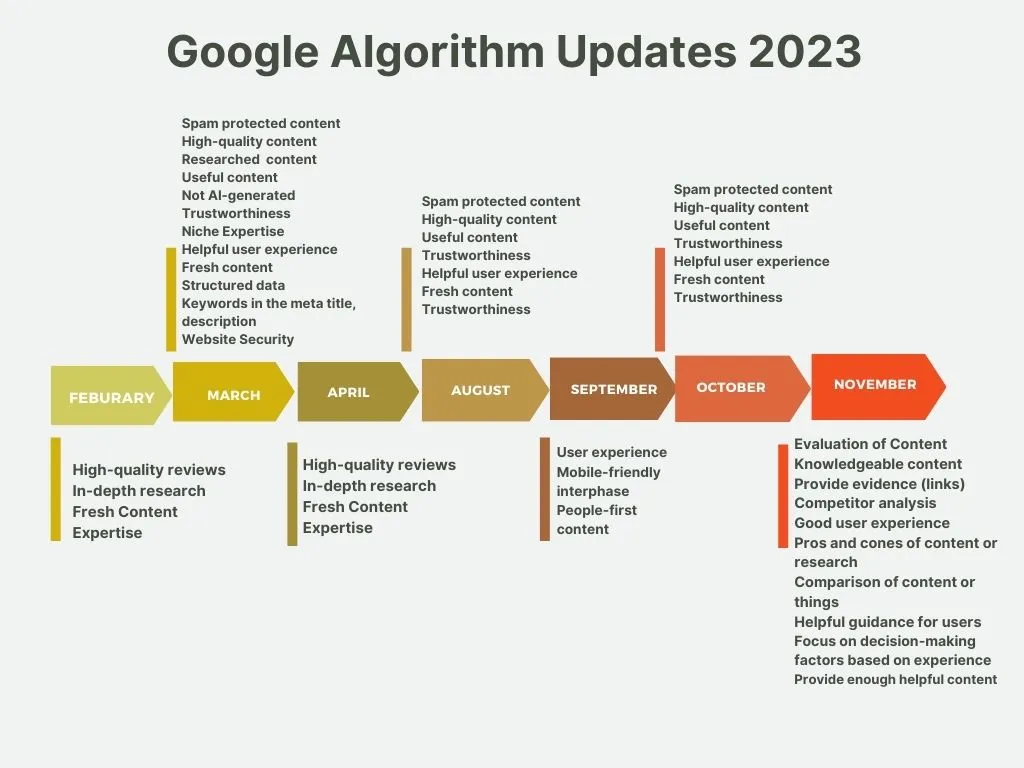
Impact of Google Algorithm on SEO
Google algorithm is a set of rules or instructions according Google determines which websites to show at the top of search results. When Google updates or changes its algorithm, it can have a significant impact on SEO. When there are new updates to the Google algorithm, websites need to adjust their SEO strategies to rank higher in search results. Websites that understand and adopt these changes can rank higher in search results. SEO professionals keep an eye on these changes to ensure websites stay optimized for the latest algorithm updates. Google, in its updates from February 2023 to November 2023, continuously focuses on high-quality content, reviews, expertise, responsiveness of the website, backlinks, etc. All these updates are related to SEO. Let’s see how.
What is SEO?
Search engine optimization (SEO) is the process of making changes to improve the visibility of websites in search engine rankings. SEO involves using relevant keywords, high-quality content, customizing images, meta tags, meta titles, website structure, and other changes.
What is On-page SEO?
On-page SEO involve keyword optimization on websites, URLs, meta tags, meta titles, headings, meta descriptions, content, image optimization, etc.
On-page SEO is basically implementing useful keywords into titles and content. As we take a look at Google Update 2023, Google focuses on useful, user-friendly content, which can be attained through on-page SEO.
- Meta tags are the titles of web pages that appear in search engine results. Google focuses on the use of relevant keywords in meta tags. The length limit of meta tags should be around 50–60 characters for better display in search results.
- A meta description is a brief description of the content. It should include keywords. It can influence the click-through rate. Include keywords in the meta description naturally and stay within 150–160 characters.
- The use of keywords in headings (H1, H2, etc.) is important for SEO. H1 is used for the main title, and H2, H3, etc. for subheadings. This structure helps search engines understand the content well. Use relevant keywords in headings while maintaining readability.
- Structured and user-friendly URLs include relevant keywords, and there should be no unnecessary parameters or symbols. Use the name of the website in the URL and in its description. Use the keyword 3–4 times in the description.
Effective Use of Header Tags (H1, H2, and H3)
- Use the H1 tag for the main title of the page, incorporating the primary keyword. It provides a clear topic overview for users and search engines.
- Organized content using sub-headings (H2 and H3) to enhance readability. Include variations of keywords in subheadings when appropriate.
- Google, in its algorithm 2023, focuses on producing high-quality, relevant, and valuable content. According to the Google algorithm, researched, authoritative, and useful content is a significant factor in search engine rankings.
- Relevant and naturally used keywords in content, title tags, headings, and meta descriptions impact the SEO of the content. According to the Google algorithm, keyword stuffing can negatively impact website ranking.
- Image optimization, using ALT tags, helps search engines understand the content.
Must use keywords that are most relevant and most visible in any search engine to rank. User intent is very important in SEO. It refers to the goals or purpose that a user has in mind. Use keywords that are related to the quality of goods and services. While using keyword, keep these points in mind:
- First categorize the keywords according to your goals. Categorizing the keywords is called conversion potential, i.e., if we are providing any service or selling any product, then you must give the details, easy checkouts, etc.
- Understanding the user’s intent and search behavior allows you to create content that satisfies the user’s needs. Optimize for the right keywords associated with user intent.
- Navigational, informational, and transactional queries are very important. They provide knowledge about the use of the right keywords. Conduct keyword research to identify and target relevant keywords for each query type.
Email marketing is the biggest source for focusing on the SEO of a website. If a user does not buy the product, then do effective email marketing. After a few hours, send him/her an email and tell him/her the qualities of the product or offer any discount.
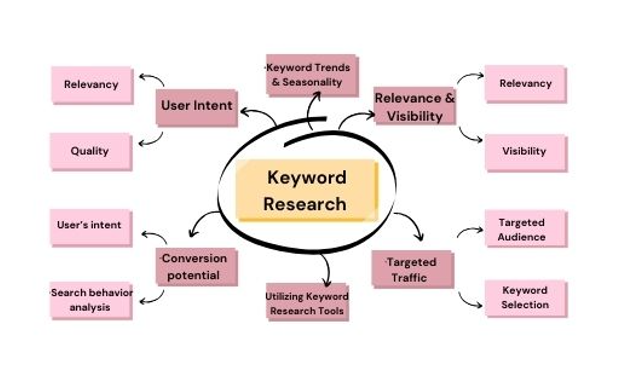
Utilizing Keyword Research Tools for Data-driven Decisions
Google Keyword Planner
Google Keyword Planner is a powerful tool for discovering keywords. It provides insights into a keyword’s search volume, competition, and potential cost-per-click (CPC).
SEMrush
SEMrush is a comprehensive SEO tool that offers features for keyword research, competition analysis, site audits, and more. It provides data on keyword volume, competition, and trends.
Ahrefs
Ahrefs is a popular SEO tool. It offers a variety of features, like keyword research, backlink analysis, and site auditing. It provides valuable data on search volume, keyword difficulty, and competitor analysis. Ahrefs can help you discover keywords that your competitors are ranking for, allowing you to identify opportunities to improve your own SEO.
Moz
Moz’s Keyword Explorer helps you find relevant keywords and provides metrics such as search volume, difficulty, and potential for organic clicks. It also offers insights into the SERP (search engine results page) features.
These tools help:
- Identify keyword trends and seasonality.
- Discover long-tail keywords and short-tail keywords.
- Balancing strategies based on user intent.
Effective keyword research is a foundational element of SEO. Maintain a balance between long-tail and short-tail keywords. On long-tail keywords, there is less competition in the rankings of sites.
Off-page SEO
Off-page SEO covers elements like backlinks and external traffic.
- Backlinks improve the SEO of websites. Link to other relevant pages within your website. Include links to authoritative and relevant external websites. This helps search engines navigate and understand the structure of your website and add credibility to your content.
- Internal linking strategies for user experience and SEO involve the use of appropriate and relevant links.
- Utilize contextual relevance links.
- Internal linking makes user navigation easy.
- Distribute links equally.
How to Make Effective Backlinks
Backlinks are the links from external websites pointing to your site. They are key factors in search engine algorithms, indicating authority and relevance. It is important building a strong backlink profile. These steps can be followed:
- Backlinks are used managing online reputation of a website. Identify high-quality backlinks and low-quality ones. High-quality backlinks make a website authoritative.
- You can write an email to another website saying that you will provide their customers with free service if they provide you backlinks.
- Manage your online reputation on social media platforms to gain backlinks. Social media signals have an impact on SEO and brand visibility. Make sure your visibility is high on social media accounts and platforms.
- Use effectively review platforms to have online reputation. It may affect your website SEO.
- Guest Blogging and outreach strategies may help getting backlinks. Guest blogging means using someone’s name (who is famous) as your ID to gain traffic. But this marketing is negative. But it has a timely advantage.
- Outreach strategies may result in back-linking. You can get reviews from others by giving them some offers.
Technical SEO
Technical SEO involves improving website speed, mobile responsiveness, etc. Following are the main steps to do for Technical SEO.
- The website should be mobile-friendly. 80% of sites are mobile conversations, which is why the site should be mobile and tab-responsive. A mobile-friendly website is crucial for both the user experience and search engine rankings. Google gives importance to quickly loading websites and pages.
- Page speed is a ranking factor. Users prefer fast-loading websites. Positive user experience (UX), clear navigation structure, and user-friendly content help improve SEO.
- Crawl ability and index ability are the main parts of technical SEO. Implementing XML sitemaps and robots.txt enhances the technical SEO of the website.
- Canonicalization and proper use of redirects improve technical SEO. If you are using SEO Yost, then the option goes for canonical.
- If you add schema markup, rich snippets, then Google will rank your site, and it will also give you a star rating.
Local SEO
To understand local SEO and its importance, it is necessary to know the local intent of users. It is important to know: which service does the user want? Which data does the user want? How much visibility is there on the search engine?
Setting Up and Optimizing Google My Business (GMB) Enhances local SEO
Consistency in NAP boosts SEO. Name, address, phone number, and information on every social media platform should be the same. NAP and other business information in local directories and citation building are crucial for several reasons, especially for local businesses with a physical presence or targeting local customers. Consistent and accurate information in directories and citations builds trust and credibility.
For setting up Google My Business, follow these steps:
- Search “Google business profile”
- Click “manage now” and then continue
- Sign up your account and use user ID in the of your business
- Three options will appear
- Online retail
- Local store
- Service business
(Choose one option among them then click next)
- If you have any website then enter the name of your website otherwise skip the option.
- Select any category and then click next (It will be your niche)
- Then enter address and phone number
- Finally verify your account
- Click the option of “put your business on the map”.
- For the verification you can upload a video of your business.
- The next option will appear of timings (here you have to upload that when your business is going to start. Add maximum information)
- In the description, add keywords, as much as you can, related to your business.
- Add images. Images must include a GEO tag (you will find many sites on Google that will convert your images into GEO tags).
You can track your business on “Citation Tracker.” A “citation tracker” is a tool or piece of software that helps businesses monitor and manage their online citations. Citations refer to instances where your business name, address, phone number (NAP), and other information are mentioned on external websites, directories, or online platforms. Citation tracking tools are designed to keep track of these mentions and ensure that your business information is accurate and consistent.
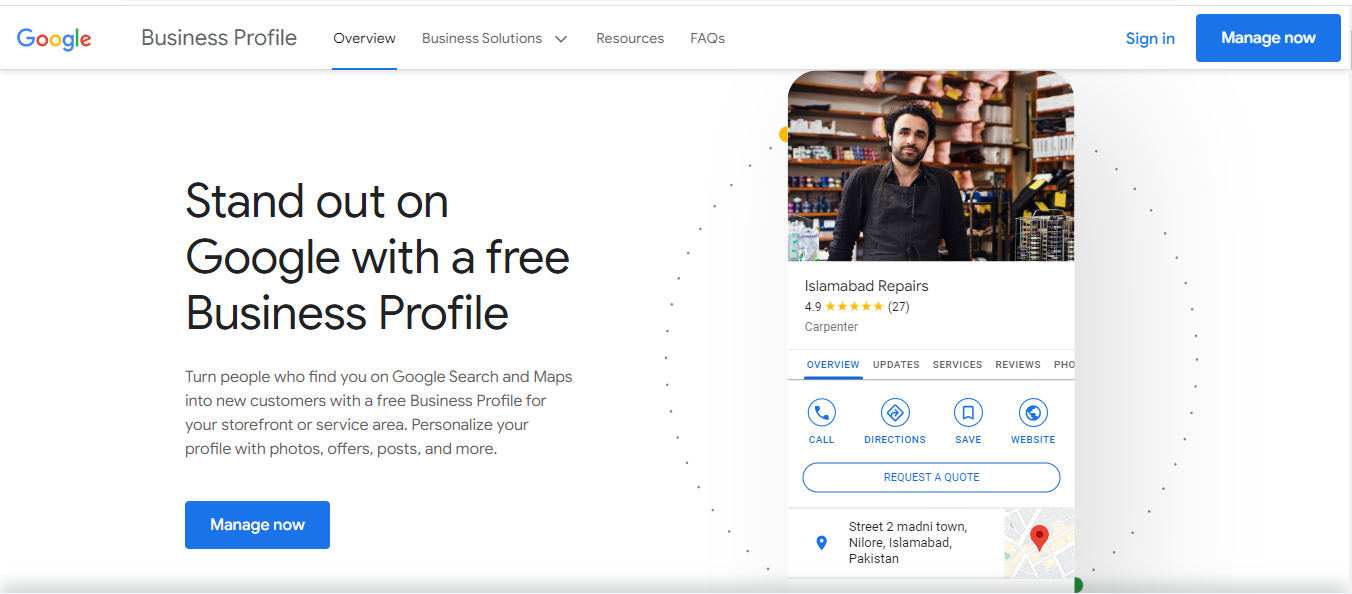
The Symbiotic Relationship Between Content Marketing and SEO
If your content is of high quality, then you will automatically get backlinks. Create high-quality, relevant, and valuable content. Value and relevance, engaging elements, and keyword integration in content can improve SEO. Develop an additional calendar, planning, and content strategy for better content marketing and SEO. Address user intent through different content formats (blogs, infographics, videos). Consider the platform that you are using for creating informational content. Visual content can enhance SEO ranking. Share content on social media platforms regularly. For better SEO analytics and monitoring, you can set up Google Analytics for tracking SEO metrics.
Setting up Google Analytics for Tracking SEO Metrics
Follow these steps for setting up Google Analytics for the better SEO strategies:
- Go on Google Analytics and enter the name of your business.
- Select all the options.
- Enter digital marketing on the properties.
- In business objectives, choose options like: Generate leads, Drive sales.
- Click on examine user behavior. Also give awareness.
- Add the name of your site to the option of your site.
- Paste the long code on the header.
- Monitor organic traffic, bounce rate, and conversations for improving SEO.
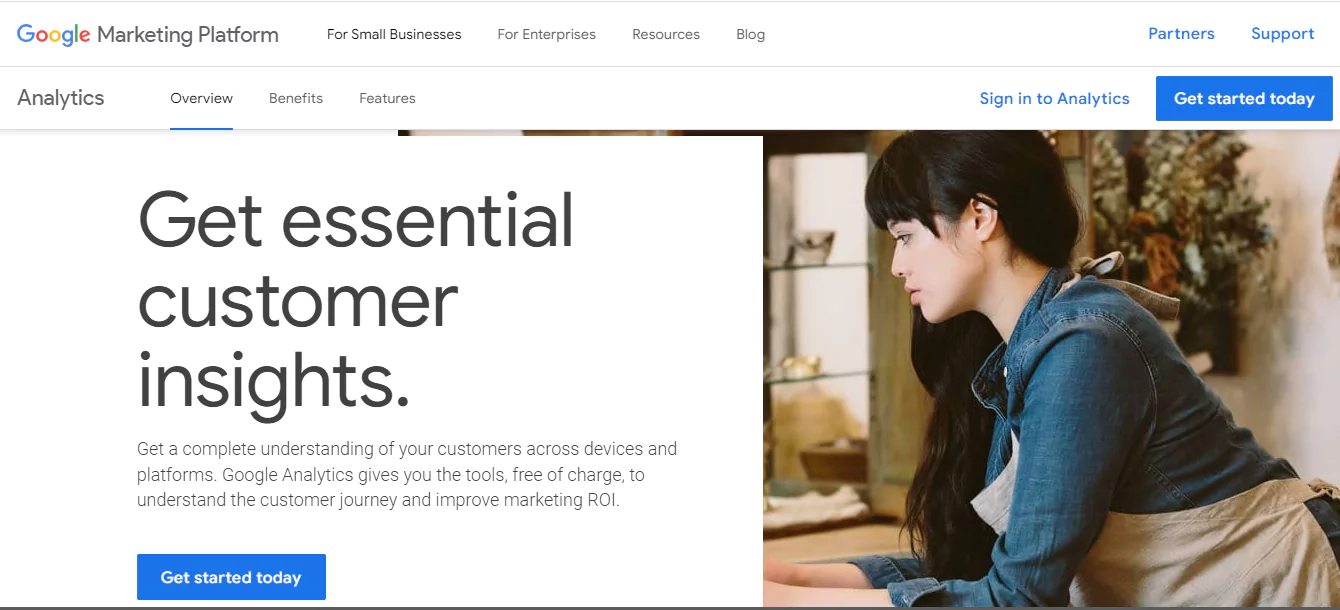
Google Search Console and Bing Web Master Tool
Leverage the Google Search Console for insight and optimization. It helps improving indexing and crawling performance insights and indexing issues.
You can track backlink tracking from the Bing Web Master Tools.
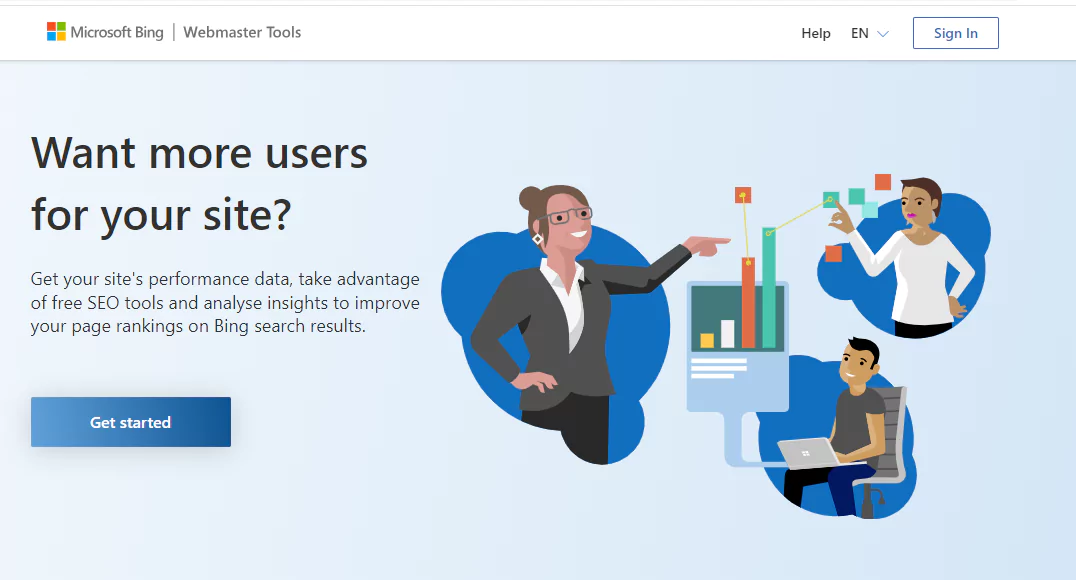
Google Algorithm Updates and the Future of SEO Navigation (Conclusion)
It is important to understand algorithm updates. It can impact ranking. Keep adopting SEO’s latest strategies for algorithm changes. Continuously, keep checking for new Google Algorithm updates. Must watch the results of these updates on your ranking, and analyze their impact. Identify patterns and check which trends are long-term and which are short-term. Adjust tactics and constantly keep modifying on-page SEO, content quality, etc. Prepare your website for voice search and mobile-first indexing. The options of language or voice availability can enhance website visibility. It is important to make your site mobile-responsive. Explore emerging trends in SEO (AI, visual search, etc.) through practical exercises and case studies. You can implement on-page optimization on a sample webpage. Analyze and optimize strategies and enhance content according to new strategies. Conduct keyword research for a hypothetical business. Analyze and compare the backlink profiles of different websites. Backlink quality assessment and competitor analysis help make better SEO strategies. Optimize a local business for improved local SEO. Create and promote content using various channels. Website traffic can be boosted through SEO and backlinks.
About the Author

Sara Lorel
Sara is a professional digital marketer and SEO content writer.
You might also like
SEO Optimization According to Google Algorithm 2023 Facebook Twitter Instagram Blogger Pinterest Medium Linkedin In 2023, Google made big changes in its …
In the digital world, where a lot of websites exist, it is necessary to make your website unique, attractive, and stand out. Being different increases success and makes a website grow and stand out from its competitors.
Freelancing platforms and job websites are online platforms that connect individuals or businesses. People can look for their jobs or businesses can hire freelance employees to work with them.
Join Our Free Courses & Offers For Free Services Now
At digitalelane, we are offering a number of free courses and services for limited time. Visit our courses and services pages for detail free offers.



